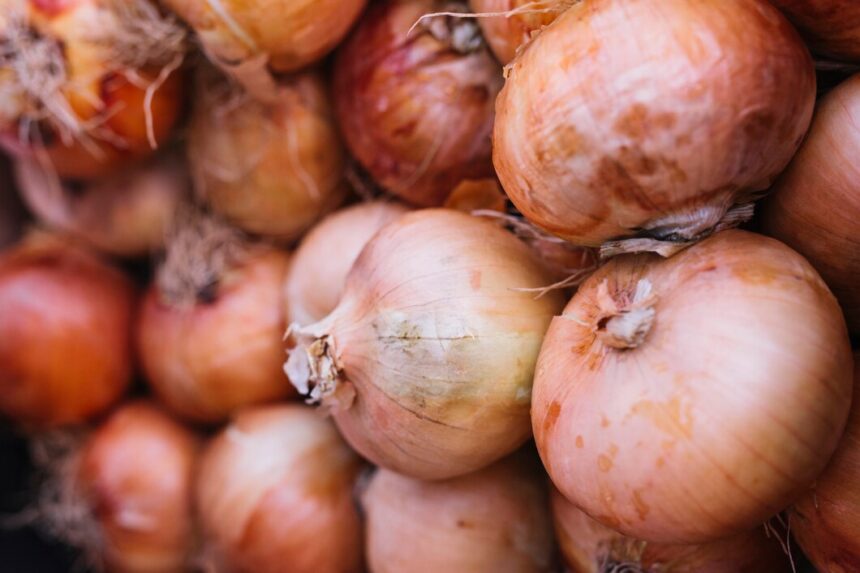Onions are a staple ingredient in cuisines around the world, prized for their pungent flavor and versatility in various dishes. In South Africa, onions are a significant crop, grown in both commercial farms and backyard gardens. However, achieving high-quality yields of onions requires careful attention to cultivation techniques, soil management, pest and disease control, and harvesting practices. In this article, we’ll explore some techniques for enhancing the quality and yield of onions in South Africa, empowering farmers and gardeners to maximize their onion production.
1. Selecting Suitable Varieties:
Choosing the right onion varieties adapted to South Africa’s climate and soil conditions is crucial for successful cultivation. Varieties such as Granex, Stuttgarter, and Texas Grano are popular choices for their adaptability to a wide range of growing conditions and their ability to produce high-quality bulbs.
2. Soil Preparation and Fertility Management:
Onions thrive in well-drained, fertile soil with a pH range of 6.0 to 7.5. Before planting, prepare the soil by incorporating organic matter such as compost or well-rotted manure to improve soil structure and fertility. Conduct soil tests to assess nutrient levels and adjust fertilization accordingly, ensuring optimal nutrient availability for onion growth and development.
3. Planting Techniques:
Onions can be grown from seeds, sets (small bulbs), or transplants. Choose the planting method that best suits your growing conditions and preferences. When planting onions from seeds or sets, ensure proper spacing (typically 10-15 cm between plants) to allow for adequate bulb development. Plant onion transplants at the same depth as they were growing in their containers, and water thoroughly after planting to promote establishment.
4. Irrigation Management:
Onions require consistent moisture throughout the growing season, especially during bulb formation. Implement efficient irrigation practices such as drip irrigation or soaker hoses to deliver water directly to the root zone while minimizing water waste. Monitor soil moisture levels regularly and adjust irrigation frequency and duration as needed to prevent water stress and promote healthy onion growth.
5. Weed Control:
Weeds compete with onions for water, nutrients, and sunlight, reducing yield and quality. Implement effective weed control measures such as mulching with organic materials, hand weeding, or using pre-emergent herbicides to suppress weed growth and maintain a clean growing environment around onion plants.
6. Pest and Disease Management:
Onions are susceptible to pests and diseases such as onion thrips, onion maggots, and fungal pathogens. Monitor onion crops regularly for signs of pest infestation or disease symptoms, and take prompt action to prevent damage. Implement integrated pest management (IPM) strategies, including cultural practices, biological controls, and judicious use of pesticides, to minimize pest and disease pressure while preserving natural ecosystems.
7. Harvesting and Curing:
Harvest onions when the tops have turned yellow and started to dry out, typically 90 to 120 days after planting, depending on the variety and growing conditions. Carefully lift the onions from the soil using a fork or shovel, taking care not to damage the bulbs or stems. Allow harvested onions to cure in a well-ventilated, dry area with good air circulation for 1-2 weeks to promote skin formation and reduce the risk of storage diseases.
8. Storage and Post-Harvest Handling:
After curing, trim the tops and roots of the onions to 1-2 cm and store them in a cool, dry, well-ventilated location with temperatures around 0°C to 4°C and relative humidity of 65-70%. Proper storage conditions help prolong the shelf life of onions and maintain their quality for extended periods, allowing for year-round availability and marketability.
By implementing these techniques for enhancing quality and yield, farmers and gardeners in South Africa can unlock the full potential of their onion crops and achieve bountiful harvests of high-quality bulbs. Whether you’re a commercial onion grower or a backyard gardener, paying attention to soil preparation, planting techniques, irrigation management, pest and disease control, harvesting practices, and post-harvest handling is essential for maximizing onion production and profitability. With dedication, knowledge, and careful management, you can cultivate success and reap the rewards of a thriving onion crop, contributing to South Africa’s agricultural prosperity and food security.
Join 'Farmers Mag' WhatsApp Channel
Get the latest Farming news and tips delivered straight to your WhatsApp
CLICK HERE TO JOIN






